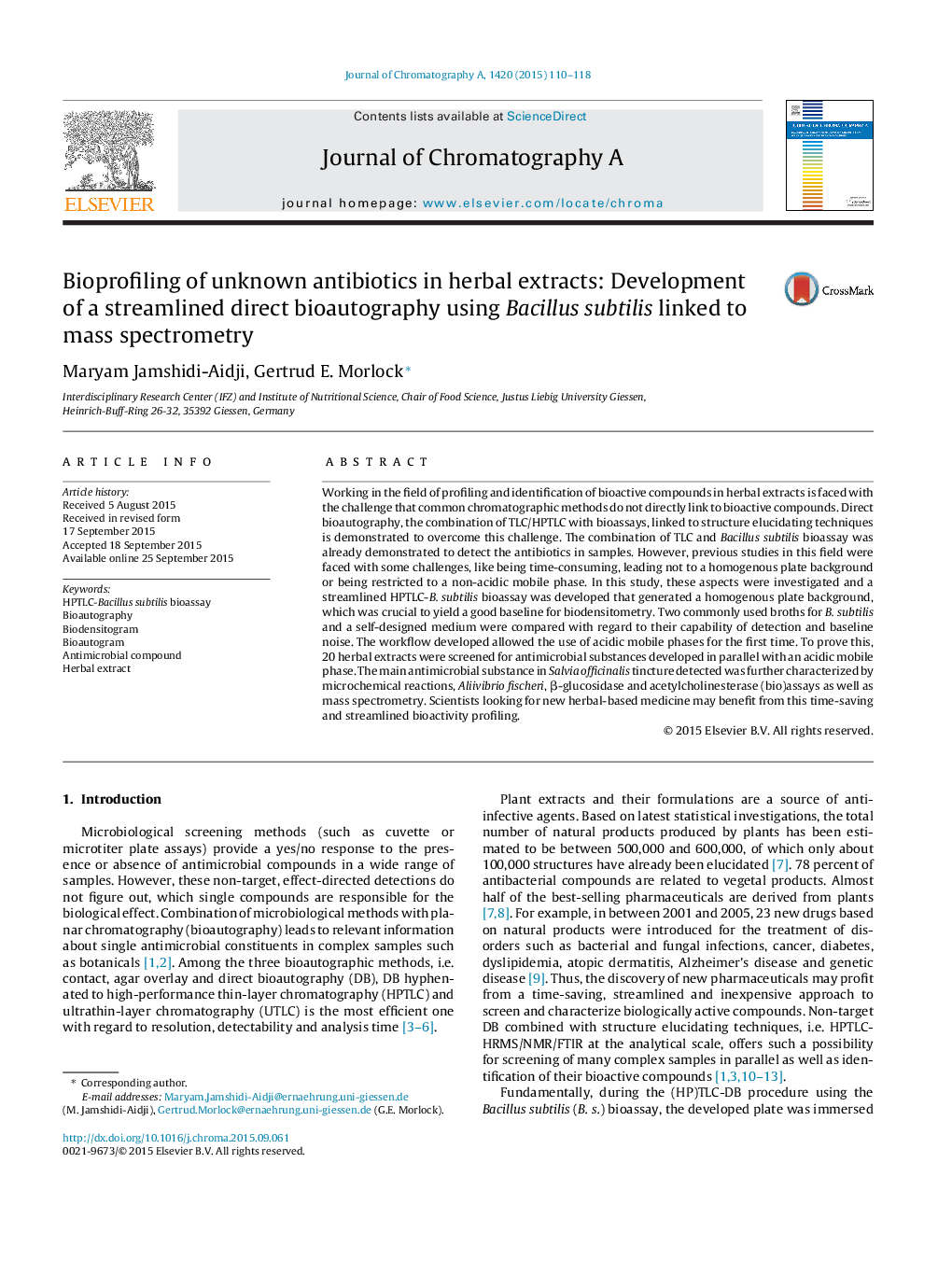| Article ID | Journal | Published Year | Pages | File Type |
|---|---|---|---|---|
| 1200883 | Journal of Chromatography A | 2015 | 9 Pages |
•Development of a homogenous plate background for HPTLC-Bacillus subtilis bioassay.•Introduction of a novel broth for B. subtilis, compared with two common broths.•Workflow improvement to allow the development of plant extracts with acidic mobile phases.•Hyphenation with microchemical reactions and mass spectrometry.•Profiling via HPTLC-Aliivibrio fischeri/β-glucosidase/acetylcholinesterase assays.
Working in the field of profiling and identification of bioactive compounds in herbal extracts is faced with the challenge that common chromatographic methods do not directly link to bioactive compounds. Direct bioautography, the combination of TLC/HPTLC with bioassays, linked to structure elucidating techniques is demonstrated to overcome this challenge. The combination of TLC and Bacillus subtilis bioassay was already demonstrated to detect the antibiotics in samples. However, previous studies in this field were faced with some challenges, like being time-consuming, leading not to a homogenous plate background or being restricted to a non-acidic mobile phase. In this study, these aspects were investigated and a streamlined HPTLC-B. subtilis bioassay was developed that generated a homogenous plate background, which was crucial to yield a good baseline for biodensitometry. Two commonly used broths for B. subtilis and a self-designed medium were compared with regard to their capability of detection and baseline noise. The workflow developed allowed the use of acidic mobile phases for the first time. To prove this, 20 herbal extracts were screened for antimicrobial substances developed in parallel with an acidic mobile phase. The main antimicrobial substance in Salvia officinalis tincture detected was further characterized by microchemical reactions, Aliivibrio fischeri, β-glucosidase and acetylcholinesterase (bio)assays as well as mass spectrometry. Scientists looking for new herbal-based medicine may benefit from this time-saving and streamlined bioactivity profiling.
